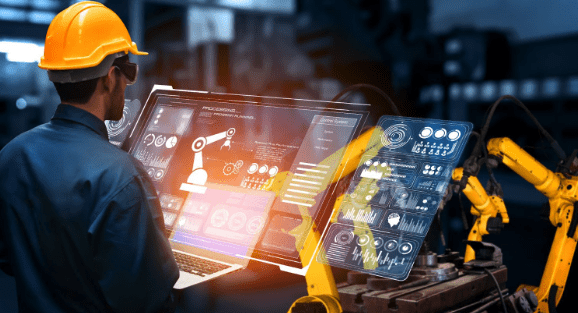Artificial Intelligence (AI) has emerged as a transformative force across countless industries. However, the development of high-performing AI systems doesn’t happen in a vacuum—it relies heavily on engineering models. These models form the backbone of intelligent systems by offering structured, reliable, and scalable blueprints that drive innovation, ensure accuracy, and enable real-world deployment.
This article explores the pivotal role of engineering models in AI development, their applications, benefits, and the future they’re shaping.
What Are Engineering Models in AI?
Engineering models are abstract representations of physical, logical, or computational systems. In the context of AI, they provide a mathematical and structural foundation for how an AI system should interpret data, learn patterns, and make decisions.
These models can range from simple rule-based frameworks to complex machine learning architectures. Whether used for predictive analytics, robotics, or natural language processing, engineering models are essential in ensuring that AI systems behave as intended.
Laying the Groundwork: Engineering Models as the Foundation of AI Systems
Before an AI algorithm is implemented, a corresponding engineering model is developed to define:
- System architecture and behavior
- Constraints and operating conditions
- Inputs, outputs, and feedback loops
- Testing and validation protocols
For instance, in robotics, an engineering model may simulate how a robot will move through a space, interpret sensor data, or interact with objects. This model ensures that the AI controlling the robot can operate safely and efficiently in unpredictable environments.
Improving Accuracy and Performance through Simulation
Engineering models allow AI developers to test their algorithms in virtual environments before real-world deployment. These simulations are invaluable for:
- Testing edge cases and rare scenarios
- Validating performance under various conditions
- Avoiding costly real-world mistakes
- Accelerating development cycles
For example, in autonomous vehicle development, engineering models simulate road conditions, traffic, weather, and pedestrian behavior. This ensures that AI systems learn from a broad spectrum of situations without exposing humans to risk.
Model-Based Design: Bridging Engineering and AI
Model-Based Design (MBD) is a methodology that integrates engineering modeling directly into the AI development workflow. It enables teams to:
- Design and simulate systems with mathematical precision
- Automatically generate code from models
- Iterate and optimize quickly
MBD is widely used in industries like aerospace, automotive, and industrial automation. Tools like MATLAB/Simulink allow engineers to build complex systems and test AI algorithms in a closed-loop environment, greatly reducing time to market and increasing reliability.
Engineering Models and Machine Learning
In machine learning (ML), engineering models help define how data is processed and how learning occurs. Examples include:
- Neural networks modeled after the human brain
- Support vector machines (SVMs) that map input to decision boundaries
- Probabilistic models that manage uncertainty and variability
These models must be trained, validated, and tested against defined benchmarks—another area where engineering principles are crucial. Properly engineered models ensure that AI systems are scalable, generalizable, and robust under changing conditions.
The Role of Digital Twins in AI Development
Digital twins—virtual replicas of physical systems—are becoming vital in AI development. These models enable AI systems to interact with a simulated version of reality, allowing for deeper learning and system-level optimization.
In industrial settings, digital twins can simulate entire manufacturing lines or energy grids, allowing AI to:
- Predict outcomes
- Optimize performance
- Plan maintenance
- Enhance decision-making
By bridging physical and digital worlds, engineering models in the form of digital twins are pushing AI development to new heights.
Benefits of Engineering Models in AI Development
- Enhanced Accuracy
Engineering models help eliminate ambiguity, ensuring AI systems function as intended with precise mathematical logic. - Faster Development Cycles
Simulations and automated testing speed up prototyping, debugging, and deployment. - Improved Safety and Reliability
Especially in critical sectors like healthcare, aerospace, and automotive, engineering models ensure rigorous validation of AI behavior. - Cost Savings
Virtual testing avoids expensive real-world trial and error, saving time and resources. - Scalability
Models make it easier to scale systems across multiple applications and environments.
Challenges in Modeling for AI Systems
While engineering models are essential, they also come with challenges:
- Model Complexity: As AI systems grow, so do their models, making them harder to manage and validate.
- Interdisciplinary Collaboration: Engineering and AI development often require different skill sets, and bridging this gap can be difficult.
- Data Integration: Engineering models must be fed with high-quality, real-time data to function effectively.
- Model Interpretability: Especially in ML, understanding how and why a model reaches a decision remains a challenge.
To overcome these, there’s a growing need for tools and platforms that support co-development between AI developers and engineers.
The Future: AI-Infused Engineering Models
The next frontier involves engineering models that are powered by AI themselves. These self-learning models adapt in real-time, update based on new data, and optimize performance without human intervention.
Examples include:
- Adaptive control systems that evolve over time
- Predictive models that refine themselves with each use
- AI-guided simulations that reduce human workload while increasing accuracy
These intelligent engineering models are paving the way for fully autonomous systems that can manage, maintain, and improve themselves with minimal oversight.
Conclusion: Engineering Models as the Silent Architects of AI
While much of the spotlight in AI development goes to algorithms and data, engineering models are the silent architects that make it all possible. They bring structure, predictability, and validation to the complex, often abstract world of AI systems.
By leveraging engineering models effectively, we not only enhance the capabilities of AI but also ensure that it’s safe, scalable, and truly intelligent. As AI continues to evolve, so too will the engineering models that shape its future.
Would you like a visual diagram or infographic to accompany this article?
Also Read :
